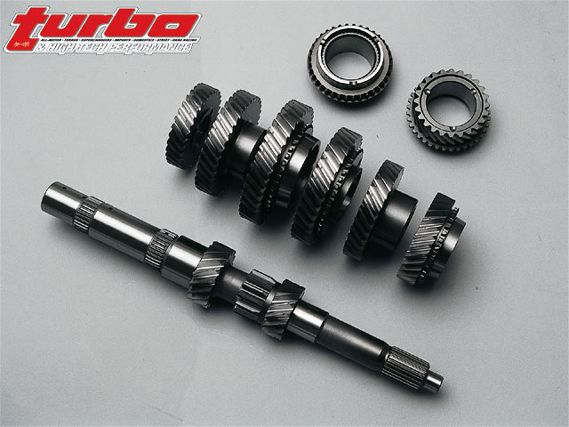 | Rebel With A Kaaz
| Rebel With A Kaaz
If we were to go back into the history of FWD drag racing and point out the most important enhancement, what do you think it would be? Most would answer, "horsepower." Back in the day, it was amazing to see diminutive four bangers pump out anything over 300 hp in race trim and turn low 12-second e.t.s.
Step forward a few years, say 1996, and horsepower was in the 450 to 550 range. This much horsepower produced solid 10-second passes with trap speeds in the 130-mph range. Now, in the new millennium, horsepower levels for most competition vehicles still lie in the mid 500s, with a few racers putting 600-plus to the wheels. However, despite a slight change in the horsepower, times have dropped drastically with more than a dozen four-cylinder racers deep in the nines. Before you assume horsepower is the biggest improvement for front-wheel-drives, think again. A built motor that pumps out 600-plus hp won't get you into single digits without optimum traction.
Most import racers are discovering their race cars only need about 550 hp to attain 9-second stardom. While it's still a challenge to achieve these types of numbers, it's clear that traction is getting these FWD racecars to lower e.t.s-not brute power. With the help of wheelie-bars and boost controllers equipped with scramble boost programs, the nines are now possible.
Wheelie-bars solved the issue of unwanted transfer of weight to the rear while new, high-tech boost controllers with built-in scramble boost settings allowed for more traction control out of the hole. So what's next? We feel that transmission gear ratios are going to start playing a major role in the 1320 game, just as it has for the domestic market. Some top-flight import racers are currently dabbling with stock ratios from other transmissions of the same manufacturer, but only a handful are actually experimenting with aftermarket gear ratios that exceed the limitations of factory cogs. One company testing these uncharted waters in FWD performance is Kaaz. The Japanese-based company is highly respected for its extensive gear work in N1, Formula 3000 and rally racing.
Since FWD drag racing is so popular in the States, Kaaz decided to satisfy the need for import drag racing gears. Its normal road race gear set is designed for close-ratio, quick shifting to improve acceleration in the twisties. For drag race applications, Kaaz needed to experiment with gears on the opposite side of the spectrum from its usual road race style, which required working with taller ratios. Front-wheel-drive drag racing requires taller gear ratios to get the most distance out of the low gears. Whether the gears are from a LS non-VTEC or GS-R VTEC tranny, first gear ends just shy of 60-foot mark. Having to shift in just 1.5 to 1.8 seconds is tough; many racers tend to bounce off the rev-limiter prior to shifting into second gear. A taller first and second gear would greatly improve 60-foot, 1/8-mile and 1/4-mile times if the gear size is calculated properly. Kaaz tapped into its road racing experience and developed a gear set for the import drag racer.
The entire set-up comes in a set of eight and a new mainshaft is also provided to compensate for the major change in ratio. At press time, Kaaz offers gear sets for popular front-, rear- and all-wheel-drive Nissans, Mitsubishis, Toyotas and Hondas. Our test set is designed for a Honda B-series hydraulic transmission; currently, there is no application for cable-style Hondas. Kaaz also offers various ratios for the final drive which can be tailored for road or drag racing.
We decided to follow a few steps of the installation process for both the limited-slip differential and gear set at Wesloh Honda in San Juan Capistrano, Calif. The surgery was performed by Gilbert Aguilera and the gearbox being dissected is a '94 hydraulic-style setup destined for Project Integra. Since the set is originally designed for VTEC transmissions and Project Integra utilizes an LS trans, we had to incorporate VTEC syncro assemblies. This included VTEC syncro hubs, sleeves, rings and springs as well as new differential bearings.
STOCK B16A TRANSMISSION GEAR RATIO SPEED (IN MPH, RPM VS. GEAR) Final 4.40 Tire: 205/50R15 72.479 2K 3K 4K 5K 6K 7K 8K 9K 1st 3.231 1st 10 14 19 24 29 34 39 43 2nd 2.105 2nd 15 22 30 37 44 52 59 67 3rd 1.458 3rd 21 32 43 53 64 75 86 96 4th 1.103 4th 28 42 {{{57}}} 71 85 99 113 127 5th .0848 5th 37 55 74 92 110 129 147 165 Kaaz Gear set (MCH1850) with Kaaz Final (FGH1835) GEAR RATIO SPEED (IN MPH, RPM VS. GEAR) Final 3.50 Tire: 205/50R15 72.479 2K 3K 4K 5K 6K 7K 8K 9K 1st 2.667 1st 15 22 29 37 44 51 59 66 2nd 2.118 2nd 19 28 37 46 56 85 74 83 3rd 1.682 3rd 23 35 47 58 70 82 93 105 4th 1.333 4th 29 44 59 74 88 103 118 132 5th 1.069 5th 37 55 73 92 110 128 147 165